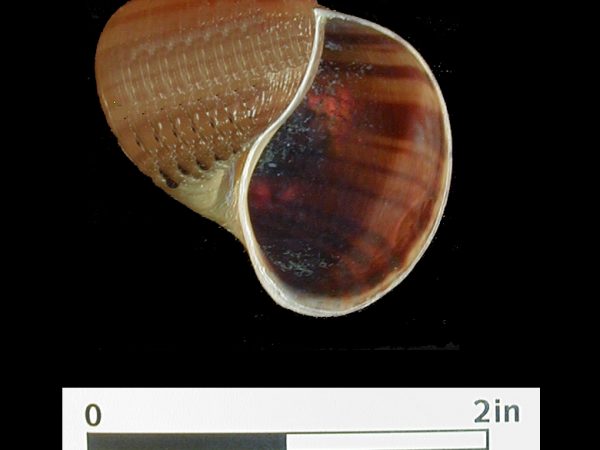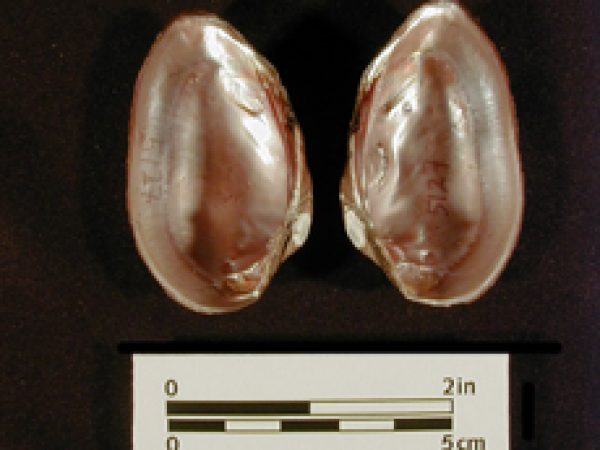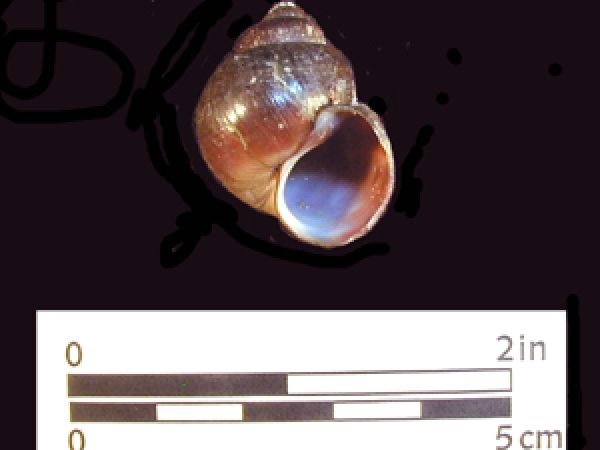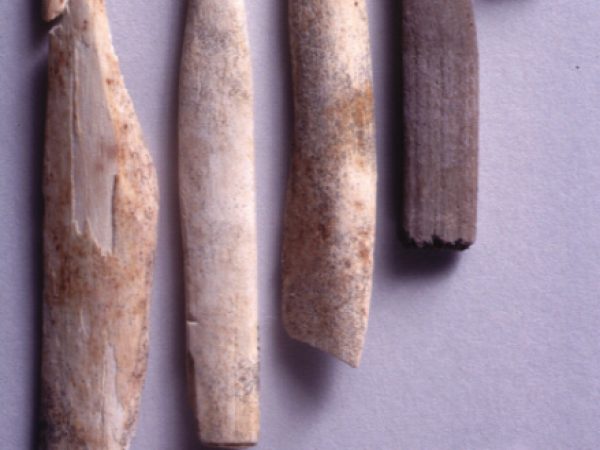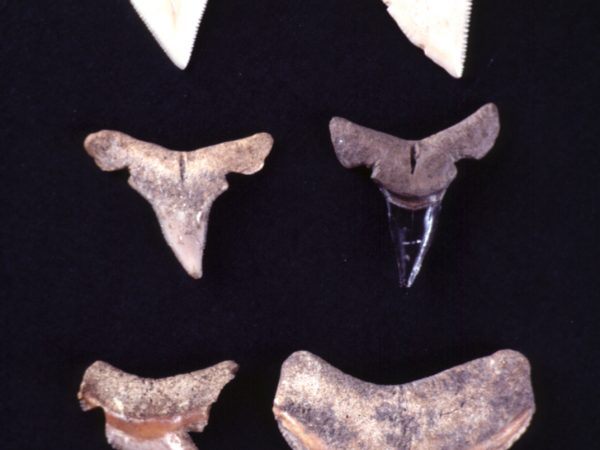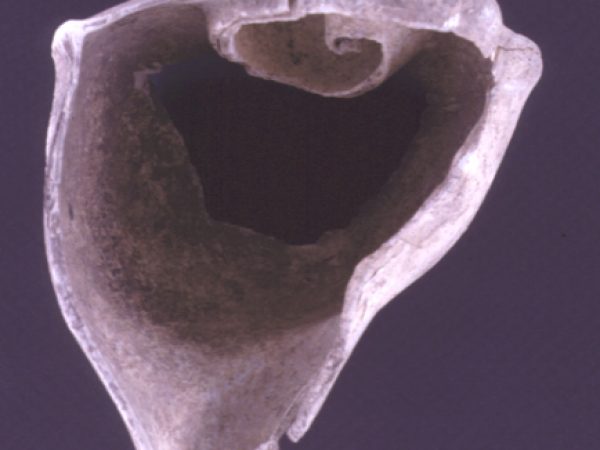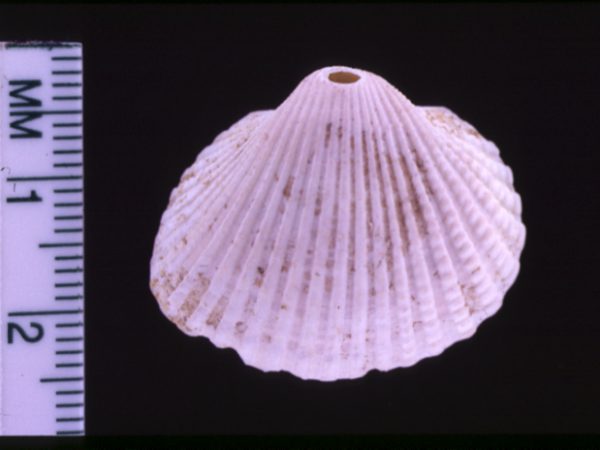Zooarchaeology at the Lake Monroe Outlet Midden (8VO53)
By Irvy R. Quitmyer
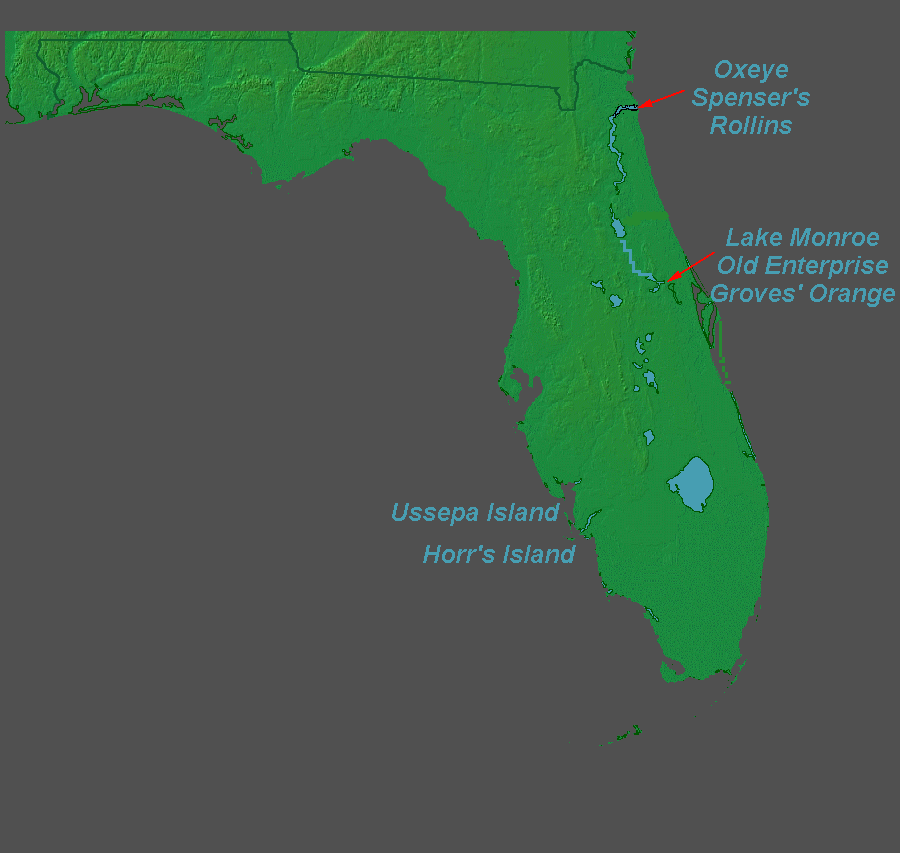
Late in the Pleistocene epoch (ca. 14,000 B.P. – Before Present), Paleoindians entered North America across the Bering Land Bridge from Siberia. They spread across the landscape moving as far south as present day Tierra del Fuego in South America. The southeastern extent of Paleoindians in North America has been documented by archaeological investigations in the Aucilla River and Little Salt Springs in peninsular Florida. At the end of the Pleistocene (10,000 B.P.) the earth’s climate, fauna and flora had evolved into their modern configuration (the Holocene Epoch). Paleoindians were then faced with the need to adapt their Ice Age way of life to this changing environment.
A history of humans adapting to the early and middle Holocene environment is contained in the refuse left by Florida’s Archaic period people (9500 B.P. – 4000 B.P.). Such deposits (middens) are found along Florida’s coastline, at places like Horr’s Island, Collier County (8CR209, ca 3950 B.P. – 3450 B.P.), Useppa Island, Lee County (8LL51, ca. 5000 B.P., Oxeye Island, Duval County (8DU7479, ca. 4500 B.P.), Spencer’s Midden, Duval County (8DU5626, ca. 5700 B.P.) and Rollins, Duval County (8DU7510, ca. 3700 B.P). [Fig.1]
In east-central Florida’s interior near the city of Sanford a similar record of the Archaic period exists along the shoreline of Lake Monroe in Volusia and Seminole Counties. In terms of midden volume the Old Enterprise site (8VO55) is among the most impressive. Jefferies Wyman (1868) records the principal shell midden as 130 by 140 feet on the base and between 18 and 20 feet high. Groves’ Orange Midden (8VO2601), northwest of Enterprise, contains a record of Archaic period adaptation and environment that ranges between 6000 B.P. and 3000 B.P..
Archaic period people settled at the Lake Monroe Outlet Midden (8VO53) around 5600 B.P. The skeletal remains of animals left during their occupation present an opportunity to examine preceramic Archaic period lifeways and the environment during the middle Holocene of east-central Florida. These people subsisted as hunters, fishers, and gathers prior to the invention of ceramic cooking vessels in southeastern North America.
The goal of this study was to identify the animal remains (vertebrate and invertebrate) present in six samples recovered from two excavation units from the Lake Monroe Outlet Midden site. In so doing, we calculate the relative abundance of the identified animals, assess their state of preservation, and estimate the adequacy of the sample. These data are used to calculate the diversity and evenness of the animal species that were exploited. This calculation helps to define the degree of specialization in the food quest. Species composition and measurements of the fish remains help to identify which habitats were exploited and the technology that was used in their acquisition. This area of study is called zoarchaeology.
Zooarchaeological data from six midden samples present a picture of a people whose quest for animal protein was primarily focused on aquatic resource from the shallow edge of the lake and river. This is supported by the presence of small catfishes (Ictaluridae), sunfishes (Centrarchidae) and eels (Anguilla rostrata) that are common to shallow grassy zones. Large mouth bass (Micropterus salmoides) frequent all of the aquatic zones, but small individuals would have also used the shallow vegetated areas for cover. Garfishes, such as the Florida gar (Lepisosteus platyrhincus), hunt the shallows for small fishes, but may also be found in deeper, quiet waters of the lake.
Aquatic reptiles are further evidence for the use of shallow water zones. Mud/musk turtles (Kinosternidae) are strongly aquatic and occur on the bottom of shallow water zones. They may also be seen in floating vegetation. Cooters (Emydidae) may be acquired in, or along the shorelines of large lakes, ponds, canals, sluggish rivers, or marshes, while soft shell turtle (Apalone ferox) prefers sandy, or mud bottom lakes, ponds and canals.
The most abundant animals recorded from the Lake Monroe Outlet Midden were the mollusks. Apple snail (Pomacea paludosa) [Fig. 2], mussels (Unionidae) [Fig. 3] and to a much lesser degree banded mystery snails (Viviparus georgianus) [Fig. 4] were heavily exploited. These animals, along with rasp elimia (Elimia floridensis) and mesa rams horn (Planorbells sclaris) are residents of the grassy shallow water zones.
Terrestrial animals such as fox squirrel (Sciurus niger), white-tailed deer (Odocoileus virginanus), box turtle (Terrapene carolina) and gopher tortoise (Gopherus polyphemus) are evidence for the use of the hammocks and open areas bordering the lake and river. Although rare, their use would have added range to the animal portion of the diet. Most certainly, the bones of white-tailed deer would have proved a source of durable material for tools and ornaments. [Fig. 5] The hides would have also been used.
The identification of a wide range of marine resources at the Lake Monroe Outlet midden further characterizes a people that were well acquainted with the use of aquatic resources. Although some of these animals could have been used as food, it is clear that many were not. Some of the shark teeth are fossils, while others appear to have been obtained from animals living contemporaneously in the Archaic period. [Fig. 6] Many of these specimens were notched at the base of their blades, drilled at their base and some had worn edges from use. These modifications suggest that they were used as tools or ornaments.
Most of the marine shells also appear to be altered by humans or through natural agents that made them attractive for use as tools or ornaments. For example, the lightning whelk (Busycon sinistrum) shells have been made into cups through the removal of their columellas. [Fig. 7] Most of these vessels are burnt, apparently in the cooking process. The arc (Arcidae) shells have holes drilled in their umbos. It is not clear if these holes are the result of natural predators (predatory gastropods) or humans. [Fig. 8] The presence of the marine resources in the zooarchaeological record is clear evidence for active trade and travel to the coast.
The faunal remains associated with the Lake Monroe Outlet Midden people reflect the habits and habitats of the animals that were being exploited. Apple snails and mussels were major contributors to the diet and would have been most easily obtained through simple gathering. Such a subsistence activity presents little risk and all segments of the human population could contribute. Bags, baskets, gourds, wooden containers or even canoes would have facilitated their exploitation.
Small fish (e.g., Lepomis sp.) are evidence of the use of fine mesh nets, traps or weirs in which large predatory fishes (e.g., largemouth bass) would have also been caught. Larger fishes (e.g., bass) could have also been taken with spears or clubs while they tended their eggs (beds) in the shallow near-shore zone.
A statistical study of animal diversity and evenness of the Lake Monroe zooarchaeological samples shows two interesting trends. First, the zooarchaeological record of the Lake Monroe Outlet Midden presents a very specialized approach to subsistence. A narrow range of species was used, with a focus on apple snails and mussels. Second, there is a linear trend in both excavation units that shows the diversity and evenness of the zooarchaeological record decreasing through time (from the deepest levels to the shallowest) with the increased use of mollusks. It is not clear what this represents other than a trend toward more intensive use of molluscan resources at the Lake Monroe Outlet Midden.
Betty Meehan (1982) has shown that among the aborigines of coastal Northwest Australia, daily shellfishing expeditions are launched with the expectation of the specific species to be collected. Such behavior may account for the large accumulations of a very few species of mollusks at the Lake Monroe Outlet Midden. The very old or very young Australian aborigines will occasionally collect non-target species and do not always collect the preferred species. This behavior could account for some of the minority species that are present in the assemblages. Each of the levels may represent a relatively short period of shellfish harvest followed by the next. Alternatively, the trend could represent an increase in the human population at Lake Monroe, requiring intensive harvest of apple snails and mussels. This trend will need to be examined and developed through the analysis of other Archaic Period faunal assemblages in the region.
